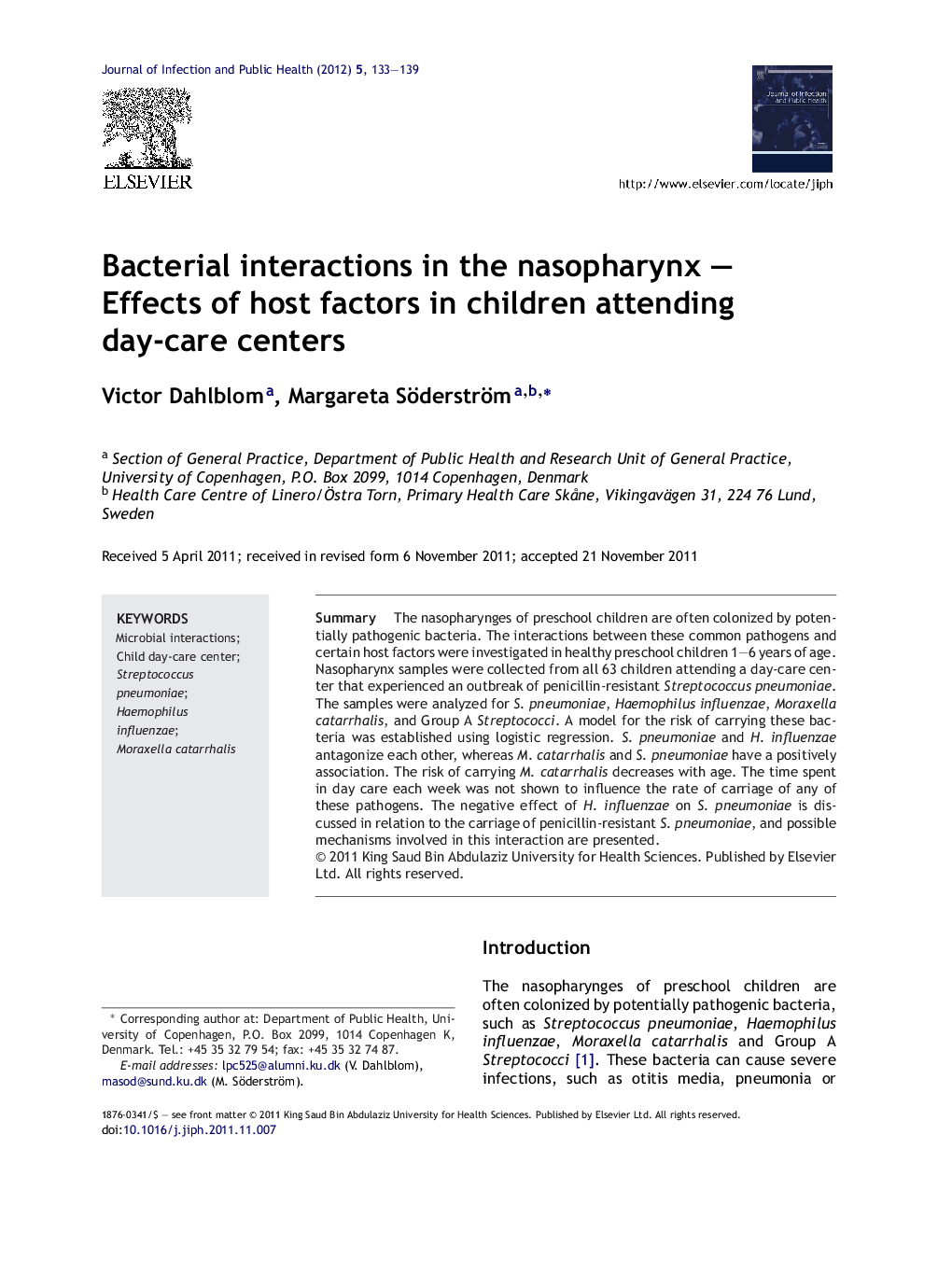| Article ID | Journal | Published Year | Pages | File Type |
|---|---|---|---|---|
| 3405957 | Journal of Infection and Public Health | 2012 | 7 Pages |
SummaryThe nasopharynges of preschool children are often colonized by potentially pathogenic bacteria. The interactions between these common pathogens and certain host factors were investigated in healthy preschool children 1–6 years of age. Nasopharynx samples were collected from all 63 children attending a day-care center that experienced an outbreak of penicillin-resistant Streptococcus pneumoniae. The samples were analyzed for S. pneumoniae, Haemophilus influenzae, Moraxella catarrhalis, and Group A Streptococci. A model for the risk of carrying these bacteria was established using logistic regression. S. pneumoniae and H. influenzae antagonize each other, whereas M. catarrhalis and S. pneumoniae have a positively association. The risk of carrying M. catarrhalis decreases with age. The time spent in day care each week was not shown to influence the rate of carriage of any of these pathogens. The negative effect of H. influenzae on S. pneumoniae is discussed in relation to the carriage of penicillin-resistant S. pneumoniae, and possible mechanisms involved in this interaction are presented.
► We studied interactions of bacteria in nasopharynges of healthy preschoolers. ► Streptococcus pneumoniae and Haemophilus influenzae seem to antagonize each other. ► S. pneumoniae cooperated with Moraxella catarrhalis. ► Weekly time spent in child day care had no influence of occurrence of the pathogens. ► Public vaccination with pneumococcal vaccine may alter the interaction.
